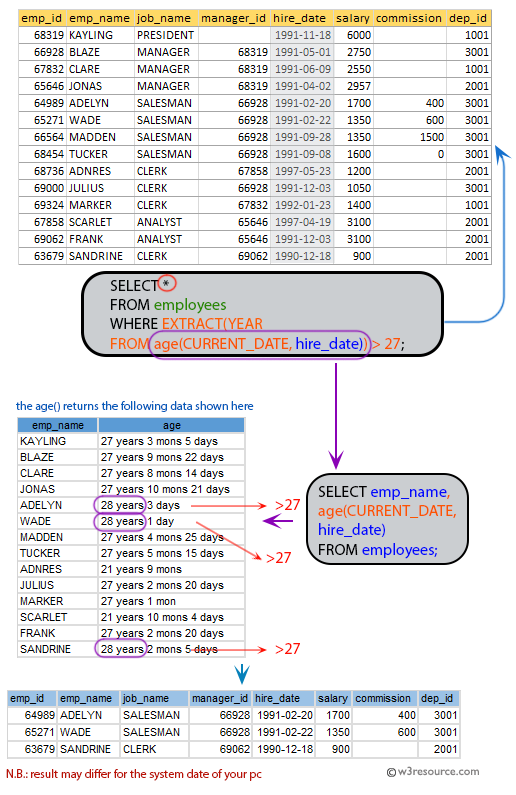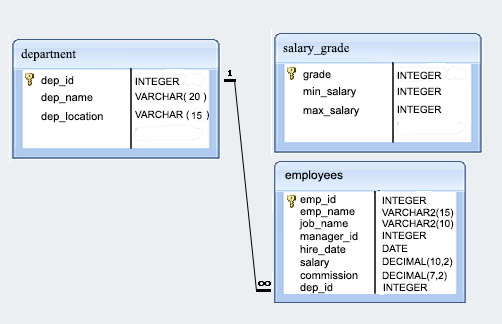SQL Exercise: Employees with more than 27 years of experience
[An editor is available at the bottom of the page to write and execute the scripts.]
21. From the following table, write a SQL query to identify employees with more than 27 years of experience. Return complete information about the employees.
Sample table: employees
Pictorial Presentation:
Sample Solution:
SELECT *
FROM employees
WHERE EXTRACT(YEAR
FROM age(CURRENT_DATE, hire_date)) > 27;
Sample Output:
emp_id | emp_name | job_name | manager_id | hire_date | salary | commission | dep_id --------+----------+----------+------------+------------+---------+------------+-------- 64989 | ADELYN | SALESMAN | 66928 | 1991-02-20 | 1700.00 | 400.00 | 3001 65271 | WADE | SALESMAN | 66928 | 1991-02-22 | 1350.00 | 600.00 | 3001 65679 | SANDRINE | CLERK | 69062 | 1990-12-18 | 900.00 | | 2001 (3 rows)
Explanation:
The said query in SQL that retrieves all the rows from the 'employees' table where the number of years between the "hire_date" column and the current date is greater than 27 years.
The "age" function calculates the time interval between the current date and the "hire_date" column and returns it as an interval value. The interval value is then passed to the "EXTRACT" function to extract the year value.
The result will include all columns of the selected rows.
Go to:
PREV : List all the employees whose designation is CLERK.
NEXT : List the employees whose salaries are less than 3500.
Practice Online
Sample Database: employees
Have another way to solve this solution? Contribute your code (and comments) through Disqus.
What is the difficulty level of this exercise?
Test your Programming skills with w3resource's quiz.


